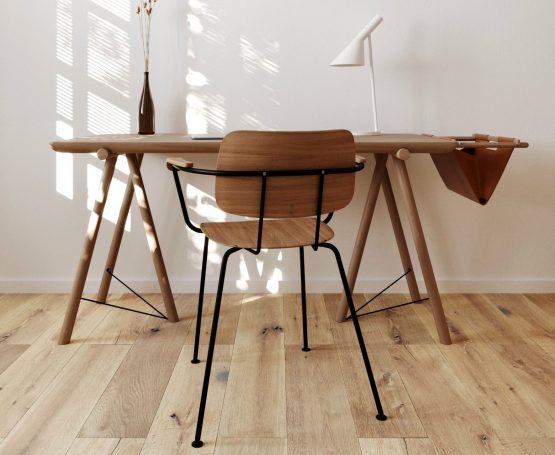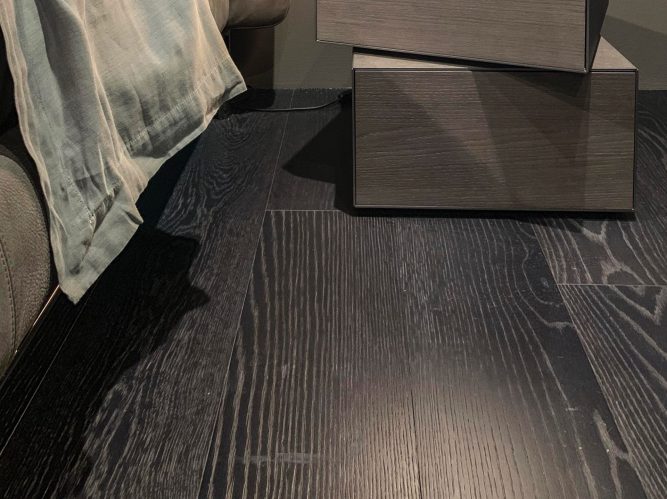How to Keep Your LVT Flooring Clean

How to Keep Your LVT Flooring Clean and Beautiful
LVT flooring, or luxury vinyl tile flooring sometimes known as Karndean or Amtico after the two major brands in the LVT market, is a popular choice for many
homeowners who want a stylish, durable and easy-to-maintain flooring option. Luxury Vinyl Tile flooring comes in a variety of designs, colours and textures, and it can mimic the look of natural materials, such as wood, stone or ceramic. LVT is also water-resistant, scratch-resistant and stain-resistant, making it ideal for any room in the house.
However, like any other flooring type, LVT still needs some care and attention to keep it looking its best. In this blog post, we will share some tips and tricks on how to clean and care for your Luxury flooring, and how to avoid common problems and damages.
How to Clean LVT Flooring
The best way to clean flooring like Amtico & Karndean is to sweep it frequently with a soft bristle brush – every two days should suffice. This will keep your surfaces clear of any debris that could cause minor marks and scratches. For a deeper clean, use a solution of warm water and an LVT-friendly cleaning solution and a damp cloth or mop. You can also use a vacuum cleaner with soft brush attachment, but make sure to avoid any beater bars or rotating brushes that could damage the surface of your LVT.
When cleaning your new flooring, avoid using any abrasive cleaners, scrubbers, detergents, bleach, ammonia, wax or polish, as these could harm the protective layer of your flooring and affect its appearance and performance. Also, avoid using too much water, as this could seep into the seams and edges of your flooring and cause it to swell or warp. Always wipe up any spills or stains as soon as possible, and dry your Luxury Vinyl Tile flooring thoroughly after cleaning.
How to Care for LVT Flooring
Besides regular cleaning, there are some other things you can do to care for your Amtico flooring and extend its lifespan. Here are some suggestions:
- Use felt pads or furniture protectors under the legs of your furniture to prevent scratches or dents on your new flooring. Also, avoid dragging or sliding any heavy or sharp objects across your flooring, as this could cause permanent damage. Lift and move your furniture carefully when needed.
- Use mats or rugs in high-traffic areas, such as entrances, hallways or kitchens, to protect your new floor from dirt, moisture, wear and tear. Make sure to choose mats or rugs that are suitable for your floor, and avoid any rubber-backed or latex-backed ones, as these could stain or discolour your flooring. Also, clean your mats or rugs regularly, and rotate them occasionally to avoid uneven fading or wear.
- Avoid exposing your LVT to direct sunlight, as this could cause fading or discolouration over time. Use curtains, blinds or shades to control the amount of sunlight that enters your room, and adjust them throughout the day. You can also use UV-resistant window films or coatings to reduce the harmful effects of sunlight on your LVT.
- Maintain a moderate temperature and humidity level in your room, as extreme changes in temperature or humidity could cause your LVT floor to expand or contract, resulting in gaps, cracks or buckling. Use a humidifier or dehumidifier to regulate the moisture level in your room, and avoid using any heating or cooling appliances directly on your LVT floor.

How to Repair LVT Flooring
If your flooring gets damaged, don’t panic. Depending on the type and extent of the damage, you may be able to repair it yourself or replace the affected
tile or plank. Here are some common types of damage and how to fix them:
Scratches: If your flooring gets scratched, you can try to buff it out with a soft cloth and some LVT-friendly cleaner. If the scratch is too deep or noticeable, you can use a repair kit that matches the colour and texture of your new floor. Follow the instructions on the kit to fill in the scratch and blend it with the surrounding area
Stains: If your LVT gets stained, you can try to remove it with a damp cloth and some LVT-friendly cleaner. If the stain is too stubborn or persistent, you can use a stain remover that is compatible with your flooring. Follow the instructions on the product to apply it to the stain and rinse it off. If the stain is still there, you may need to replace the stained tile or plank.
Gaps: If your LVT develops gaps between the tiles or planks, you can try to close them by applying some gentle pressure on the edges of the tiles or planks. If the gaps are too wide or deep, you may need to use a filler that matches the colour and texture of your flooring. Follow the instructions on the product to apply it to the gaps and smooth it out.
Cracks or chips: If your flooring gets cracked or chipped, you can try to fix it with a repair kit that matches the colour and texture of your LVT. Follow the instructions on the kit to fill in the crack or chip and blend it with the surrounding area. If the crack or chip is too large or noticeable, you may need to replace the cracked or chipped tile or plan.
Check out more blogs from D Good Flooring LTD here!
